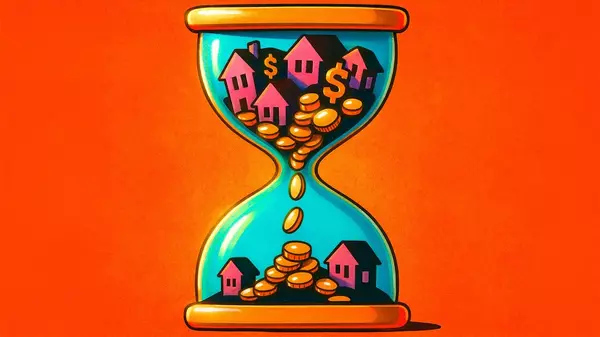How To Check If Your Dream Home Is In a Fire Zone


Tiffany Rose/Getty Images; Realtor.com
Four out-of-control wildfires continue to burn in Los Angeles County amid a worsening windstorm, prompting evacuation orders and warnings, as California Gov. Gavin Newsom has declared a state of emergency in his fire-ravaged state.
Residents attempted to flee the Palisades fire in the celebrity enclave of Pacific Palisades on Jan. 7, but many were forced to abandon their vehicles on jammed roadways and make the journey on foot.
The Eaton fire in Altadena, the Hurst fire in Sylmar, and the Woodley fire in the San Fernando Valley are also raging in the state, endangering thousands of homes in an environment that many are calling “apocalyptic.”
More than a thousand structures have been destroyed and at least two fatalities and multiple burn victims have been reported, according to L.A. fire officials.
The causes of all four fires are unknown at this time and are currently being investigated, officials said.
Wildfires like these have become increasingly common across the country, so how can you determine if a home you’re thinking of buying is at risk? And is the risk of owning a home in a fire zone worth the reward?
Climate change has changed everything
According to the Realtor.com® 2024 Housing and Climate Risk Report, approximately 5.5% of homes—worth $3 trillion—in the United States face severe or extreme risk of fire damage, and nearly 39.1% of these high-risk homes—worth $1.7 trillion—are in California.
According to a recent study, extreme wildfires have doubled in the past 20 years in frequency and magnitude, as climate change has increasingly created conditions that are conducive to dangerous fires.
Without a doubt, it’s getting harder and harder for Californians to get homeowners insurance.
At least 13% of real estate agents in California had a sales transaction canceled due to their clients not being able to find insurance in 2024, according to the California Association of Realtors.
With the state increasingly facing climate risks, Farmers Insurance, Allstate, USAA, and the Hartford have previously declared a pause on issuing new policies to homeowners in California. State Farm halted the sale of insurance for new homes in the state last summer and is pursuing rate increases of up to 52% for certain residential policies.
Actor James Woods, who lost his home in the Palisades fire, posted on X that “one of the major insurances companies canceled all the policies in our neighborhood about four months ago.”
How to check if your home is in a fire zone before you buy
Realtor.com displays wildfire risk information for homes on the website.
To find wildfire risk information, visit a listing for a property for sale on Realtor.com. Scroll down to the Environmental Risk section, and you will find an overview of a property’s wildfire risk.

This information includes a Fire Factor rating on a scale of 1 to 10, with 1 representing minimal risk and 10 representing extreme risk. The score is based on a property’s cumulative risk of wildfire over the next 30 years. The data comes from First Street Foundation, a nonprofit with expertise in climate change and natural disaster risk.
Next to the Fire Factor score, you can click on View Fire Factor report to see more details about that particular property.
Realtor.com also displays information from the U.S. Forest Service that compares wildfire risk at the county level with national averages.
To see more details on current and future risk, click on the Learn more link in the Understand this data section. This will open a view with details and links to resources.
Is it worth the investment?
Wildfire-prone areas such as the Pacific Palisades, Malibu, and Topanga continue to be in demand despite the fire risks, first and foremost because they are simply beautiful places to live.
These idyllic areas are known for their luxury homes, beautiful beaches, and incredible ocean views.
Celebrities are drawn to these affluent communities because they’re close to Los Angeles and the studios for work, yet far enough to offer a private beachfront escape.
Although people are aware of the fire risks, their desire to live in these exclusive enclaves outweighs those climate concerns.
“People are drawn to the world-class views, access to high-paying jobs, and decent schools for their children. The trade-off for their idyllic lives is that sometimes their house burns down every decade, or gets very close to burning down. There is no place in the US that is 100% safe when it comes to natural disasters, so people roll the dice,” says Jameson Tyler Drew, president of Anubis Properties, in the Los Angeles area.
“Properties that are at high risk of wildfire damage are increasingly difficult and costly to insure,” adds Hannah Jones, Realtor.com senior economic research analyst.
“Both of these forces may contribute to homes being more affordable in wildfire-prone areas. Interestingly, previous research revealed that prices have grown more quickly in high-risk areas, pointing to high demand for these risky homes, likely driven by their relative affordability. “
Homebuyers have to decide for themselves whether or not they’re willing to take that risk.
Categories
Recent Posts









"My job is to find and attract mastery-based agents to the office, protect the culture, and make sure everyone is happy! "
